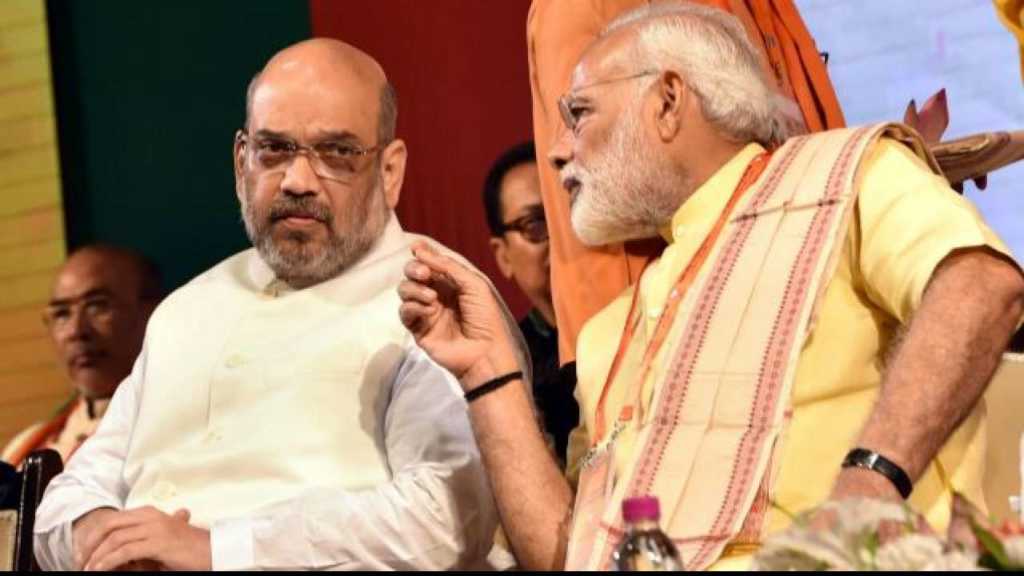Beating twenty-two years of incumbency is no mean feat. Moreover, an increased vote-share of 49% in one of the most closely-fought elections in recent history, is a positive sign for any political party. The Modi-Shah duo have retained their home state and added a new state under the party’s belt, and at least in the short term, it doesn’t seem as if they have much to worry about.
Although most of the exit polls and other similar surveys were way off the mark in terms of vote-share, the number of seats they predicted for either parties turned out to be quite accurate. Among the phenomena noticed by most surveys, there was a clear swing among the youth from the BJP towards the Congress Party. The number of new voters choosing the Congress Party as opposed to the BJP as their first choice, was higher than expected. One cannot be sure if such a swing materialized on the ground on election day. Even if it did, it is probably too insignificant for the BJP to worry about in the short term. But those at the helm of affairs in the BJP are no fools, and will certainly not ignore trends that might affect them adversely in the future.
Once again, let us clarify that nobody can claim with full certainty that such a shift is currently taking place on the ground. But there is enough reason to believe that it is. After all, the newest voters in the state have always lived under BJP rule. Incumbency affects them the hardest, considering they have never lived under Congress Party state governments. Law and order, development and good governance are factors they have taken for granted. The key question here is this: As the BJP grows and reigns supreme in many states term after term, will the youth vote which was among the party’s biggest assets increasingly become a liability for the party?
If at all this is an issue for the party, it must work on several fronts to buck such a trend. Among the most obvious, is communication. In the 2014 general elections, among the factors that altered the game considerably was social media. This as we know is the preferred medium of keeping in touch with what’s going on for many, especially the youth. In developed democracies such as the United States, social media swings entire elections. In India too increasingly, especially in the urban areas and among the youth, this is a medium which influences election results.
More than half of India’s population is below the age of 25, and with a discredited and declining mainstream media and an exponential rise in internet penetration, elections in the future will undoubtedly be fought on social media.
During the advent of prime minister Modi in 2014, the BJP was winning the social media game comfortably. This among others, is one of the factors that attracted the youth towards the BJP. More than three years down the line, this is no longer the case.
Most of the BJP’s opponents have ramped up their social media game. An alternate media ecosystem that is key to winning the social media battle, has also mushroomed around the prime minister’s political rivals. Many of them are well-funded, and have journalists who were close to the previous regime heading their operations. The Congress Party’s bots on Twitter, their hiring of president Trump’s big data managers Cambridge Analytica, and how lies about Jay Shah and the Rafale deal were spread with impunity before the Gujarat elections, indicate that the opposition has also taken to this game in a concerted manner.
Could the BJP have prevented this from happening? Was there anything the party could have done differently? We must understand why the party bet big on social media to begin with. Public discourse was held to ransom by a hostile mainstream media that constantly undermined the party. Prime minister Modi was probably the biggest victim of this phenomenon. The BJP was forced to find a way to communicate with people without middle-men who would distort their message. Therefore, they created a large social media ecosystem that gradually began controlling public discourse.
In the last three years, as the opposition has been busy setting up its own ecosystems, the BJP is perhaps finding itself cornered in this space. The shift has been from offense to defense. Unlike how they used to set the agenda in the past, they have allowed the mainstream media, the opposition and their ecosystem to set the agenda, and have been content answering back. This has legitimized the opposition’s discourse, which at one point seemed to be dying a slow death. Surprisingly, efforts to build an ecosystem have mostly been made by like-minded individuals outside the party. This is quite uncharacteristic for a party led by the dynamic Modi-Shah duo. Politically, the duo has been aggressive, setting the agenda and playing the game by their own rules. They have been meticulous with their strategy, leaving absolutely nothing to chance. For some reason though, the social media space seems to be slipping away from the election-winning behemoth created by the duo.
Knowing how the duo functions and their deep understanding of the game, this is probably just a phase. Considering how prime minister Modi took to social media and mastered it before any of his peers, one can be certain that the leadership understands the perils of slackening on this front. The leadership probably also understands that memes, jokes, funny videos and drab messaging will not influence electoral results. Any shift of the youth vote away from the BJP, if it is happening at all or even if there exists any scope for it, is a cause of concern. Having observed the duo, something big on the social media front, something that revives the party in this domain and enhances its political successes on the ground, is probably underway.
